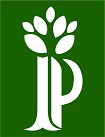
Analysis of factors affecting differences in potassium buffering capacity in several soil orders
Permata Harty Noor Fajarini(1), Eko Hanudin(2*), Benito Heru Purwanto(3)
(1) Departement of Soil Science, Faculty of Agriculture, Universitas Gadjah Mada
(2) Departement of Soil Science, Faculty of Agriculture, Universitas Gadjah Mada
(3) Departement of Soil Science, Faculty of Agriculture, Universitas Gadjah Mada
(*) Corresponding Author
Abstract
Each soil order has different reactivity to potassium ion retention capacity, especially potassium buffering capacity. These differences are related to soil characteristics, including clay mineral content and type, cation exchange capacity, and soil texture class. This study compared the potassium buffering capacity (PBCk) of Andisols, Alfisols, Inceptisols, and Vertisols. The PBCk experiment reacted 2.5 grams of air-dried soil (passing a 0.5 mm sieve) and 25 ml of KCl solution with a series of concentrations of 0, 25, 50, 75, 125, 150, 175, 200, 225, and 250 ppm. Then, it was shaken for 24 hours to reach equilibrium conditions. The next day, the solution was centrifuged to obtain a clear solution. The remaining K content in the equilibrium solution was measured using a flame photometer. The amount of K read was calculated to obtain the Q/I factor and PBCk value from the gapon equation. The Q/I relationship was used to estimate PBCk values for each soil order with changes in K in the solution or Q (∆K) as the X axis and the intensity of K or I (CRk) as the Y axis. Then, the K intensity data were connected to the PBCk results to determine the buffer capacity of the four soil orders. Vertisols showed the highest PBCk (1.099 cmol kg-1/mol L-1)0.5, followed by Andisols, Alfisols, and Inceptisols. The determining factors include clay minerals in the form of smectite (2:1), high CEC value, and soil texture dominated by clay.
Keywords
Full Text:
PDFReferences
Awgchew, H., S. Beyene, and A. Kifilu. (2024). Potassium adsorption capacity and desorption kinetics in soils of qenberenaweti sub-watershed, Central Highlands of Ethiopia. Heliyon 10(10).
Basu, A., and M. Mookherjee. (2021). Intercalation of water in kaolinite (Al₂Si₂O₅(OH)₄) at subduction zone conditions: insights from Raman spectroscopy. ACS Earth and Space Chemistry 5(4): 834-848.
Beckett, P.H.T. (1964). The “immediate” Q/I relations of labile potassium in the soil. J. Soil Sci. 15: 9–23.
Borchardt, G. (1989). Smectites. Minerals in Soil Environments. Second Edition. Soil Science Society of America Madison, Wisconsin, USA.
Carneiro, F. G., C. N. Keim, D. Acosta-Avalos, and M. Farina. (2013). Elemental composition of biomineralized amorphous mineral granules isolated from ants: Correlation with ingested mineral particles from the soil. Micron 44: 120-124.
Ehrenberg, S. N., P. Aagaard, M. J. Wilson, A. R. Fraser, and D. M. L. Duthie. (1993). Depth-dependent transformation of kaolinite to dickite in sandstones of the Norwegian continental shelf. Clay minerals 28(3): 325-352.
García R. E., A. Lorenzo, A. V. García, J. Morales, J. R. García, and M Suárez. (2021). On the structural formula of smectites: a review and new data on the influence of exchangeable cations. Applied Crystallography 54(1), 251-262.
Juknis Kimia Tanah. (2023). Kementerian Pertanian Republik Indonesia, Bogor.
Mas’ud, P. (1992). Telaah Kesuburan Tanah. Angkasa: Bandung
Mia, M. A. B. (2015). Nutrition of Crop Plants. Nova Publishers: New York
Misskire, Y., T. Mamo, A. M. Taddesse, and U. Yermiyahu (2019). Potassium adsorption and release characteristics on vertisols of North Western Ethiopian Highlands. Communications in soil science and plant analysis 50(9): 1132-1147.
Moss, P., and M. Herlihy. (1970). Availability of soil potassium to ryegrass: 2. Potassium buffering capacity. Irish Journal of Agricultural Research 109-117.
Nihn, H. T., H. T. T. Hoa, P. Q. Ha, and J. E. Dufey. (2009). Potassium buffering capacity of sandy soils from Thua Thien Hue Province, Central Vietnam, as related to soil properties. Communications in soil science and plant analysis 40(21-22): 3294-3307.
Nursyamsi, D. (2011). Mekanisme pelepasan K terfiksasi menjadi tersedia bagi pertumbuhan tanaman pada tanah-tanah yang didominasi Smektit. Jurnal Sumberdaya Lahan 5(2): 61-74.
Nursyamsi, D., dan Sutriadi. (2005). Sifat-sifat kimia dan mineralogi tanah serta kaitannya dengan kebutuhan pupuk untuk padi (Oryza sativa), Jagung (Zea mays), dan kedelai (Glycine max). Jurnal Agronomi Indonesia 33(3).
Nursyamsi, D., K. Idris, S. Sabiham, D. A. Rachim, dan A. Sofyan. (2007). Sifat-sifat tanah dominan yang berpengaruh terhadap K tersedia pada tanah-tanah yang didominasi smektit. Jurnal Tanah dan Iklim 26: 13-28.
Riaz, M., and P. Marschner. (2020). Sandy soil amended with clay soil: effect of clay soil properties on soil respiration, microbial biomass, and water extractable organic C. Journal of Soil Science and Plant Nutrition 20(4): 2465-2470.
Shakeri, S. (2018). Effect of soil buffering capacity and clay minerals on the rate coefficient of non-exchangeable potassium release. Malaysian Journal of Soil Science 22.
Shaviv, A., S. V. Mattigod, P. F. Prat, and H. Joseph. (1985). Potassium exchange in five southern California soils with high potassium fixation capacity. Soil Science Society of America Journal 49: 33 -1128.
Soil Survey Staff. (2014). Keys to Soil Taxonomy Twelfth Edition Natural Resources Conservation Service-United States Department of Agriculture. Washington DC.
Takahashi, M., T. Sakata, and K. Ishizuka. (2001). Chemical characteristics and acid buffering capacity of surface soils in Japanese forests. Water, Air, and Soil Pollution 130: 727-732.
Wang, J. J., D. L. Harrell, and P. F. Bell. (2004). Potassium buffering characteristics of three soils low in exchangeable potassium. Soil Science Society of America Journal 68(2): 654-661.
Wang, J., R.E. Farrell, and A.D. Scott. (1988). Potentiometric determination of potassium Q/I relationships. Soil Sci. Soc. Am. J. 52: 657–662.
Wu, S., M. He, M. Yang, and B. Peng. (2022). Near-Infrared spectroscopic study of OH stretching modes in kaolinite and dickite. Crystals 12(7): 907.
Article Metrics
Refbacks
- There are currently no refbacks.
Ilmu Pertanian (Agricultural Science) ISSN 0126-4214 (print), ISSN 2527-7162 (online) is published by Faculty of Agriculture Universitas Gadjah Mada collaboration with Perhimpunan Sarjana Pertanian Indonesia (PISPI) and licensed under a Creative Commons Attribution-ShareAlike 4.0 International License.











_2025_-_kecil_.png)
_2024_kecil_2.png)
